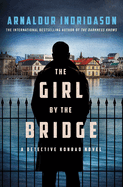
R&R isn't for everyone. Case in point: the mononymous Konrád, a restless but (technically) retired Reykjavík police detective at the center of Arnaldur Indridason's multivalent and absorbing The Girl by the Bridge, translated from the Icelandic by Philip Roughton. As in the previous books featuring Konrád (The Shadow District; The Darkness Knows), his restiveness is fueled by both his quest for justice and his messy past.
The novel opens in 1961, when a young man spots first a doll and then a 12-year-old girl's body floating in a pond. Did she drown trying to retrieve her doll? In the next chapter, a 12-year-old girl named Eygló has a vision of a girl while at a birthday party. Who is this girl? Konrád finally appears in the novel's third chapter, set in the present: friends of his late wife want his help finding their missing 20-year-old granddaughter, whom they know to be a drug mule. And that's just the novel's first dozen pages.
Indridason, roundly considered Icelandic crime fiction's top gun, nimbly ties all three strands together. (Leniency with coincidence as a plot device will serve readers well.) With The Girl by the Bridge, Indridason demonstrates his usual facility with character, fleshing out even peripheral players, which reinforces his books' deep humanity. Konrád may be skeptical when he learns of the adult Eygló's visions, but he also understands that to serve the public, sometimes "he had to disregard everything his experience as a policeman had taught him, where only the cold, hard facts of life counted." --Nell Beram, author and freelance writer

